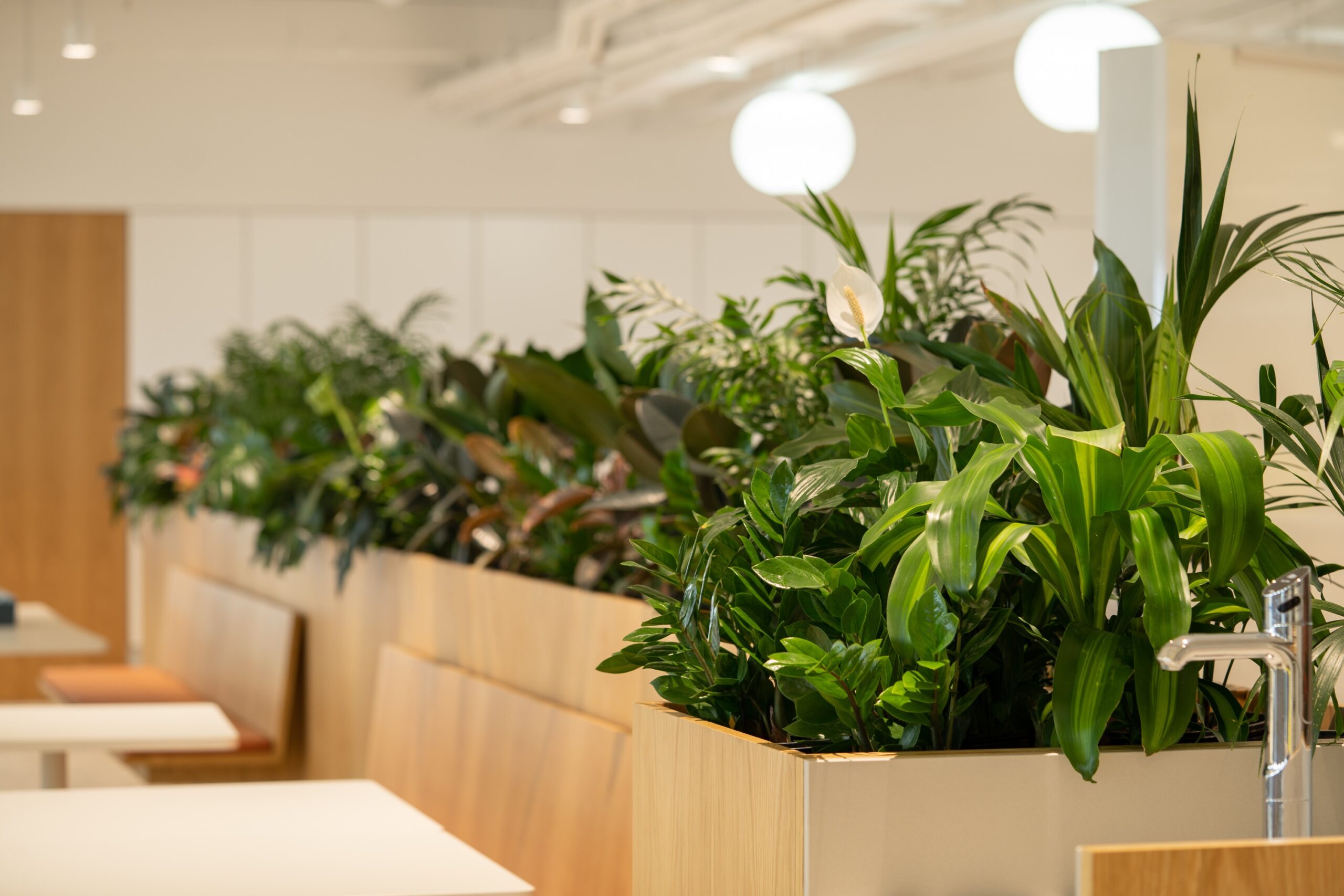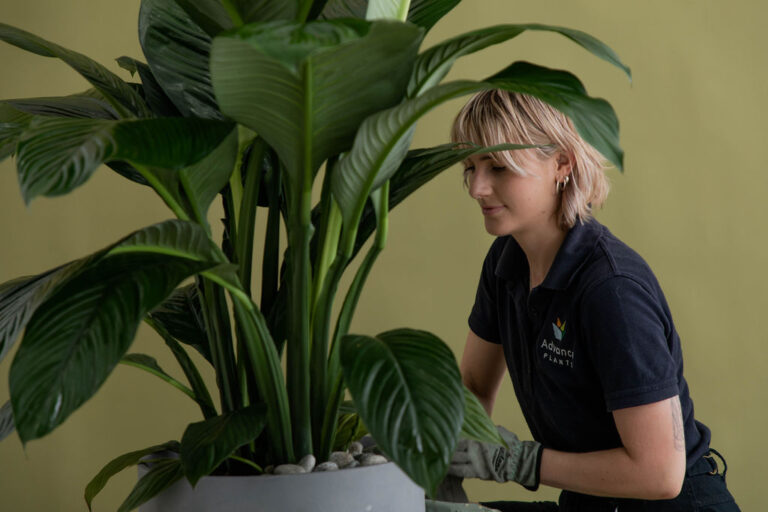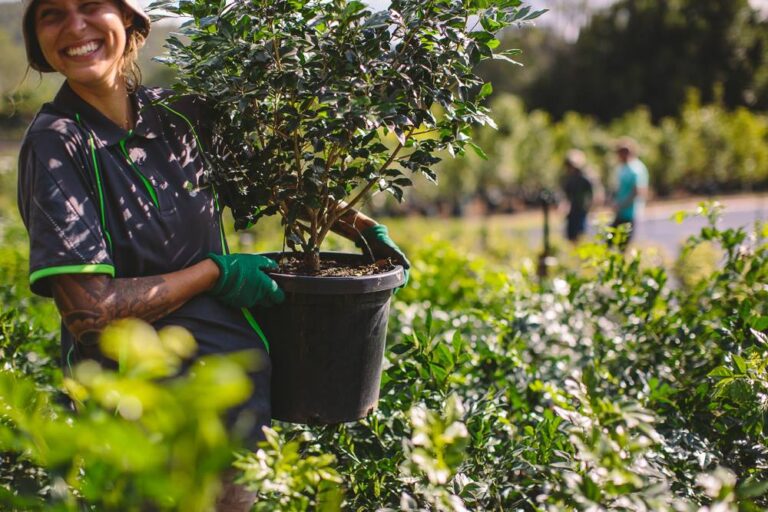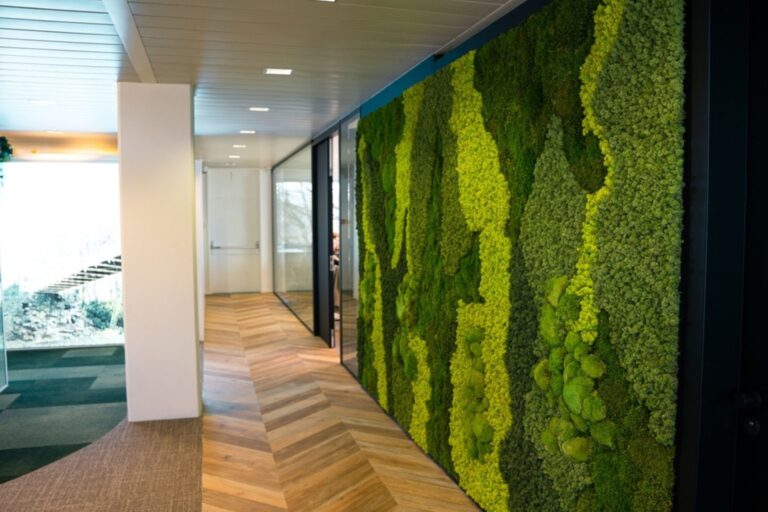As managers seek innovative solutions to enhance employee well-being and optimise office environments, the business case for office plant hire becomes evident as a highly effective and holistic approach.
Executive Summary
This article provides evidence to support the business case for office plant hire in your 2025-2026 budget. It outlines the benefits of integrating live plants into office spaces, particularly in areas affected by pollutants from indoor garages.
We explore how plants improve indoor air quality by removing toxins such as benzene, formaldehyde, and trichloroethylene, while also highlighting broader strategies for air quality enhancement through ventilation, sunlight, and strategic design. Additionally, we examine the cost-effectiveness of plant hire compared to outright purchase and its role in creating a more inviting and productive workspace.
1. The Challenge: Pollutants from Indoor Garages and Their Long-Term Effects

Indoor garages, commonly found in urban office buildings, contribute to indoor air pollution. These spaces often introduce harmful volatile organic compounds (VOCs) such as:
- Benzene
- Formaldehyde
- Trichloroethylene
Exposure to these pollutants can have severe long-term health effects:
- Benzene has been linked to bone marrow damage and is a known carcinogen, particularly associated with leukemia.
- Formaldehyde can irritate the respiratory system, lead to asthma, and is also classified as a carcinogen linked to nasopharyngeal cancer.
- Trichloroethylene is associated with neurological effects like headaches, as well as liver and kidney damage and is considered a potential carcinogen.
These toxins can circulate into office environments, affecting employees’ health and productivity. The cumulative effect of long-term exposure can result in chronic illnesses and increased sick days, directly impacting operational efficiency.

2. The Solution: Live Office Plants as Air Purifiers
Indoor plants can play a crucial role in mitigating indoor air pollution by absorbing harmful VOCs. Research such as NASA’s Clean Air Study (1989) has demonstrated that plants can remove toxins from indoor air, including benzene, formaldehyde, and trichloroethylene. While plants alone cannot fully eliminate these pollutants, they contribute to reducing concentrations and improving overall air quality.
Key Scientific Insights
- NASA Clean Air Study (1989): NASA’s study highlighted how certain plants, such as the Peace Lily (Spathiphyllum spp.) and Spider Plant (Chlorophytum comosum), can absorb VOCs, including formaldehyde and benzene, from sealed indoor environments.
- Further Research: Subsequent studies support the efficacy of plants in improving indoor air quality. However, it’s important to note that the impact of plants is most effective when combined with other strategies, such as adequate ventilation and natural light.
By strategically incorporating plants into your office, particularly in spaces near indoor garages or air vents, you strengthen the business case for office plant hire by reducing the harmful effects of pollutants and improving the overall health of your workspace.
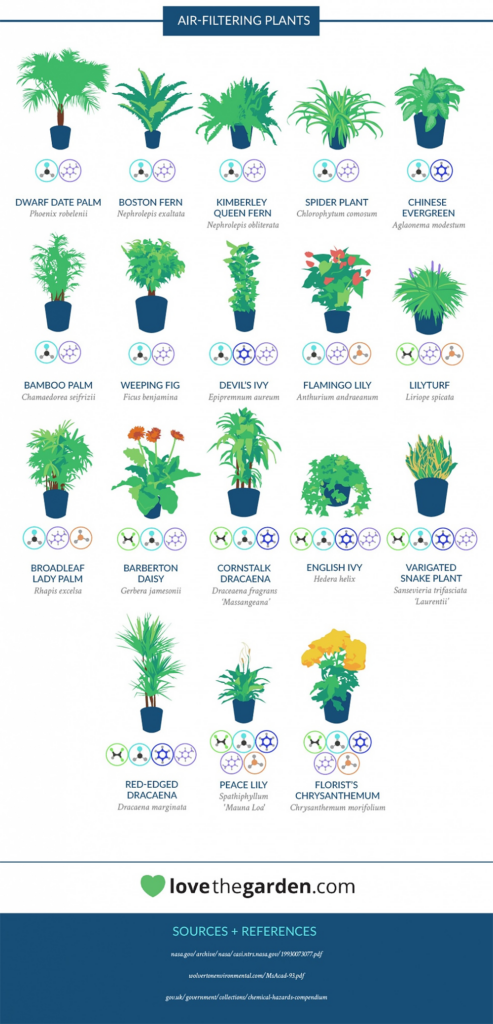
3. The Bigger Picture: Holistic Solutions for Indoor Air Quality
While plants are a beneficial component, a comprehensive strategy is needed to achieve optimal indoor air quality. Here are the key elements of a holistic approach:
- Source Control: Reducing or eliminating the use of products that emit VOCs, such as certain paints, cleaning supplies, and adhesives, is essential. Opting for low-VOC or VOC-free materials and finishes can significantly reduce the overall toxin load in your office.
- Enhanced Ventilation: Proper air ventilation is perhaps the most crucial element in maintaining healthy indoor air. This includes ensuring an adequate exchange of air between indoor and outdoor environments. A well-maintained HVAC system with features like demand-controlled ventilation can help dilute indoor air pollutants. Ventilation systems should be designed to handle the specific needs of urban office buildings, particularly those with indoor garages.
- Maximising Natural Light: Natural light can have a positive impact on air quality indirectly. Studies have shown that exposure to natural light improves mood, reduces stress, and enhances overall well-being. Moreover, natural light helps prevent mould and bacteria growth, which thrive in dark, damp environments. While it doesn’t directly purify air, maximising natural light through windows and skylights can significantly improve the quality of the workspace.
- Indoor Plants: Plants act as a complementary solution to ventilation and source control. In addition to their air-purifying capabilities, plants also contribute to employee productivity and well-being. Studies show that employees working in environments with plants report lower levels of stress and increased productivity, making them an essential part of any office wellness strategy.
4. Financial Impact: Cost of Office Plant Hire vs. Health Benefits
Costs of Office Plant Hire
- Plant Hire Packages: Plant hire services typically range from $50 to $200 per month, depending on plant types, quantities, and maintenance needs.
- Comprehensive Service: Plant hire packages generally include delivery, installation, and ongoing maintenance, ensuring that plants stay healthy and vibrant. This option saves office managers time and effort compared to managing plant care internally.
Why Plant Hire is More Cost-Effective than Purchasing Plants and Pots
- Expensive Initial Investment: Purchasing plants outright requires not only the plant itself but also high-quality pots, which can be expensive—ranging from $50 to $2,000 per pot for larger, decorative planters. Additionally, plants are living entities, and if they do not survive, the initial investment is lost.
- Free Plant Replacements: One of the key benefits of plant hire is that most companies include free replacements when plants die, which can occur despite the best care. This ensures that your office space remains fresh and green without incurring additional costs.
- Ongoing Maintenance: Maintaining plants requires specialist knowledge—without it, plants often do not thrive. With plant hire, professional maintenance is included, saving time and ensuring the plants stay healthy, reducing the likelihood of replacement due to poor care.
Overwatering: A Common Problem in Plant Care
- Overwatering vs. Underwatering: Overwatering is one of the most common causes of indoor plant death, particularly among people without specialist knowledge. Interestingly, overwatered and underwatered plants often look very similar—yellowing leaves, drooping stems, and wilting—which can make it difficult for non-experts to diagnose the issue.
- The Consequences: Overwatering can lead to root rot, a condition that suffocates plants and causes irreversible damage. Given that inexperienced employees are likely to misjudge the watering needs of plants, they may unknowingly damage them, leading to more replacements and wasted time.
Opting for plant hire allows employees to focus on their core skills and revenue-generating activities, strengthening the case for integrating plant hire into your workplace strategy.
Employee Time and Opportunity Cost
- The True Cost of Employee Time: In professional services offices, where employees are often hired out at a rate of $150+ per hour, the time spent on plant care can be a significant opportunity cost. In a large office, servicing plants could take hours each week depending on the number of plants—time that could be better spent on core business activities.
- Specialist Equipment: Keeping plants healthy requires more than just water and sunlight. Specialist tools such as humidity monitors, pruning equipment, and plant fertilisers are often necessary. Purchasing and maintaining this equipment adds further costs and distractions from employees’ primary roles.
When you opt for plant hire, you’re ensuring that your employees focus on their core skills and revenue-generating activities. Rather than spending valuable time maintaining plants.
Return on Investment (ROI)
- Improved Employee Productivity: Research by Human Spaces (2015) found that employees working in environments with plants reported up to 15% higher productivity and 25% fewer sick days.
- Reduced Health Costs: Plants contribute to reducing indoor air pollution, thereby reducing the risk of respiratory illnesses and long-term health issues. This, in turn, can result in fewer sick days, lower healthcare costs, and improved employee morale.
- Enhanced Corporate Image: Investing in plant hire not only benefits employee health but also demonstrates a commitment to sustainability and well-being, enhancing your company’s reputation and helping to attract and retain top talent.
5. Aesthetic Value: The Role of Plants in Interior Design
Plants do more than purify the air—they also play a significant role in interior design by softening spaces, adding color, and creating a welcoming atmosphere.
- Softening Spaces: Plants add texture, shape, and visual interest to office environments. They help to balance the harsh lines of furniture, lighting, and technology, making spaces feel more relaxed and inviting.
- Design Versatility: Plants can be used to complement a variety of design styles—whether it’s minimalist, industrial, modern, or bohemian—making them a flexible option for enhancing office interiors.
Example: Aesthetic Effect of Plants in Office Spaces
Here’s how plants can transform an office space:
Office With Plants:
- Lush greenery creates a calming, vibrant environment, fostering a positive mood and sense of well-being.
- Plants soften the lines of the space, making it feel more open and connected with nature.
- The overall aesthetic is welcoming and engaging, creating a visually stimulating environment.
Office Without Plants:
- The space may feel sterile and impersonal, with sharp, rigid lines and limited visual interest.
- Without plants, the room may feel colder and less inviting, potentially impacting employee mood and engagement.

6. Action Plan: Budget Allocation for 2025-2026
- Determine Plant Hire Needs
- Engage with Local Plant Hire Companies:
- Obtain quotes from reputable plant hire services in Brisbane, considering packages that align with your office’s needs.
- Consider local companies that offer flexible contracts and full-service options to ensure hassle-free plant care.
- Calculate ROI:
- Estimate potential savings in health-related costs and increased productivity due to improved air quality and employee well-being.
- Factor in the long-term benefits of a healthier workplace, including employee retention and satisfaction.
- Secure Budget Approval:
- Present this business case to senior leadership, emphasizing the health benefits, productivity improvements, and long-term cost savings associated with indoor plant hire.
7. Conclusion: A Green Investment for the Future
Incorporating live office plant hire into your office space is a strategic investment in both the health of your employees and the long-term success of your business. Plants improve indoor air quality, reduce toxins from indoor garages, and support a holistic approach to employee wellness, including enhanced ventilation and maximising natural light.
Beyond their health benefits, plants also enhance the aesthetic appeal of your workspace, making it more inviting and productive. With flexible hire packages, ongoing maintenance, and proven benefits, office plant hire is a sustainable, cost-effective solution that deserves consideration for your 2025-2026 budget.
Next Steps:
- Contact Advance Plants to explore available packages and obtain quotes.
- Present this business case to your finance team for budget approval.
- Monitor the long-term impacts of plant hire on employee health, productivity, and overall office environment quality.
